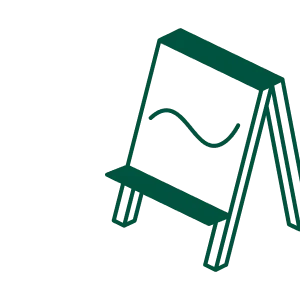Education articles

How many children attend preschool?
Nearly half of all three- and four-year-old kids went to preschool in 2023, according to data from the National Center for Education Statistics. Of 7.6 million three- and four-year olds, approximately 3.7 million — 48.8% — were enrolled in part- or full-day preschool and kindergarten programs. Around 28.6% of enrolled children were in public school programs, while 20.3% were enrolled privately. By age five, 85.4% of kids were in school. Preschool enrollment dipped during the COVID-19 pandemic: After a steady rise through the 2010s, it fell from 49.2% in 2019 to 40.2% in 2021. By 2023, the rate was again close to its 2019 peak.

What does the Department of Education (ED) do?
The Department of Education (Education Department, ED) is a cabinet-level executive branch agency responsible for overseeing education policy and administering funding for programs and individuals. The department's functions include supporting state and local education systems, promoting educational equity for all students, and providing grants and loans to higher education institutions and students. It was established in 1980 after the Department of Health, Education, and Welfare was reorganized into separate entities.

What does the Office of Career, Technical, and Adult Education (OCTAE) do?
The Office of Career, Technical, and Adult Education (OCTAE) is a subdivision of the US Department of Education responsible for administering and overseeing programs that prepare individuals for postsecondary education and the workforce. OCTAE focuses on improving career and technical education, adult education, and literacy, ensuring that all students and adults have the skills and knowledge necessary to succeed in a global economy. It was established in 1966.

What does the National Science Foundation (NSF) do?
The National Science Foundation (NSF) is an independent executive branch agency responsible for supporting science and engineering nationwide for the purpose of scientific progress, advancement of national health and welfare, and national security. The agency fulfills this objective primarily through making grants, funding approximately 25% of all federally supported research conducted by US colleges and universities. It was established in 1950.

What does the Office of Special Education and Rehabilitative Services (OSERS) do?
The Office of Special Education and Rehabilitative Services (OSERS) is a subdivision of the US Department of Education responsible for improving results and outcomes for people with disabilities of all ages. OSERS provides a wide array of supports to parents and individuals, school districts, and states in three main areas: special education, vocational rehabilitation, and research. It was established in 1979.

What does the Office of Postsecondary Education (OPE) do?
The Office of Postsecondary Education (OPE) is a subdivision of the US Department of Education responsible for promoting and ensuring access to quality postsecondary education. The agency administers programs that support higher education institutions, provide financial assistance to students, and promote innovation and improvement in postsecondary education. It also works to ensure equal access to education and to foster educational excellence throughout the nation. It was established in 1980.

What does the Institute of Education Sciences (IES) do?
The Institute of Education Sciences (IES) is a subdivision of the US Department of Education responsible for providing rigorous and relevant evidence on which to ground education practice and policy and sharing this information broadly. The agency conducts research, evaluates programs, and collects and analyzes education statistics to improve the quality of education in the United States. It was established in 2002.

What does the Office of Elementary and Secondary Education (OESE) do?
The Office of Elementary and Secondary Education (OESE) is a subdivision of the US Department of Education responsible for promoting academic excellence and ensuring equal access to education for all students in elementary and secondary schools. The office administers programs that support state and local education agencies, focusing on improving student achievement, providing resources for disadvantaged students, and enhancing teacher quality. It also oversees initiatives aimed at closing achievement gaps and fostering safe and supportive learning environments. It was established in 1980.

What does the Office of English Language Acquisition (OELA) do?
The Office of English Language Acquisition (OELA) is a subdivision of the US Department of Education responsible for providing national leadership to help ensure that English learners and immigrant students attain English proficiency and achieve academic success. The agency administers grant programs, conducts research, and provides resources and technical assistance to support high-quality education for English learners. It was established in 1974.

What does the Office of Federal Student Aid (FSA) do?
The Office of Federal Student Aid (FSA) is a subdivision of the Department of Education responsible for providing financial assistance to students pursuing postsecondary education. The agency administers federal grants, loans, and work-study funds to help students cover the cost of college or career school. It also offers resources and guidance to help students and families navigate the financial aid process. It was established in 1965.

What percentage of public school funding in the US comes from the federal government?
About 13.7% or one in every seven dollars of public school funding during the 2021–22 school year. Local and state governments typically provide most school district funding, with the federal government providing the rest. Federal sources provide as little as 0% and as much as 75% of funding, depending on the district. Federal funding depends on factors such as poverty levels and other student demographics, availability of state and local revenues, and whether a district is urban, suburban, or rural. During 2021–22, which is the latest year of data available, public schools received $124.9 billion, or $2,536 in federal funds per student.

How much do teachers get paid in the US?
About $63,100 per year in 2024. That’s the annual median wage for pre-K-12 teachers across the United States, based on estimates from the Bureau of Labor Statistics. The median marks the middle point—half of teachers earn more and half earn less. The lowest-paid 10% earned $46,900 or less, while the highest-paid 10% earned $102,300 or more.

How are public schools in the US funded?
Primarily from state and local governments. In the 2021–2022 school year, the most recent year of available data, about 44.1% of public school funding came from state sources like income and retail taxes, and another 42.2% came from local sources like property taxes. The federal government provided the remaining 13.7%, often through programs like Title I or IDEA that are aimed at supporting specific student needs. Altogether, public schools received $909.2 billion in funding, or $18,500 per student.

Back to school data
Before the opening bell rings, dig into the latest reports on American schools.

Where do foreign students attend school?
As of June 2025, 151,015 international students were studying in California, most of any state. This number reflects those who hold F-1 or M-1 student visas and maintain active student status.

How many US children receive free or reduced-price school lunch?
In 2024, 21.4 million students received subsidized lunches through the National School Lunch Program (NSLP) — 72.5% of all public-school lunches were served free or at a discount. NSLP subsidies are available to public school students as well as students at nonprofit private schools. During the COVID-19 pandemic, school closures led to a drop in NSLP participation, from 29.6 million kids in 2019 to 11.0 million in 2021; fewer open schools meant fewer kids needing lunch. A pandemic waiver allowed all students who were physically attending school to receive free meals, and 98.9% of all 2021 school lunches were at least partially subsidized. The free and reduced-price school lunch program is now resettling after that aberration.

How many students are enrolled in charter schools?
In the fall of 2022, 3.7 million students — 7.6% of public school students nationally — attended charter schools. That’s up from 4.6% a decade prior. At that same time the percentage of non-charter public school students dropped, from 95.4% to 92.4%. In some parts of the US, more than 20% of K-12 students now attend charter schools. What is a charter school?A charter school is a public school of choice: parents can choose to send their children there instead of to their assigned neighborhood school. Charter schools get public funding and have many of the same legal requirements as traditional public schools — state testing, nondiscrimination policies, health and safety standards. And like all public schools, charter schools can’t charge tuition or have a religious affiliation. They operate under a contract called a “charter” that outlines the school’s purpose, mission, governance, enrollment plans, and target student outcomes. These outcomes may range from specific goals like preparing students for postsecondary education to broader aims like developing leadership skills. Each charter school is overseen by an “authorizer,” a local or state entity that monitors the school’s academic performance and financial practices. Charter schools can be started by individuals or groups who identify a need that isn’t being met by existing public schools. When more students apply than there are available seats, a lottery is often used to determine enrollment. Although charter schools have more freedom than traditional public schools in areas like curriculum, staffing, and school management, schools are still required to meet state and national education standards.

Which states have the highest and lowest adult literacy rates?
Between 2017 and 2023, the percentage of adults performing at the lowest proficiency level in literacy increased by 9 percentage points. This is the first statistically significant drop since the initial round of data collection in 2012.This recurring survey, called the Program for the International Assessment of Adult Competencies (PIAAC), measures the competency of working-age adults ages 16–65 in three areas: literacy, numeracy, and digital problem-solving.

Who are the nation's teachers? Key insights in five charts
Pre-K-12 teachers made up 3.4% of the workforce in 2024, according to the Bureau of Labor Statistics. Demographically, teachers are more likely to be white, a woman, and in their 40s. These patterns vary somewhat by school level but are true across the teaching profession overall. Here’s a snapshot of the nation’s teachers. How old are the nation’s teachers?In 2022, teachers ages 30 to 49 made up over half the teaching workforce. Teachers in their 40s made up most of the teaching pool (26.1%), followed closely by those in their 30s at 25.4%.

How universities spend billions in government funds
Aside from student financial aid, the federal government funds universities with grants and contracts. One major way universities use this funding is for research and development (R&D). In FY 2023, federal dollars supported $59.6 billion of university R&D expenses. The fields that received the most funding in 2023 were life sciences and engineering. Life sciences programs, the study of the nature and function of living things, received $33.9 billion, or 56.9% of federal grant and contract funding. Enginering applies math and physics to solve practical problems by designing, building, and improving structures, systems, and processes. Engineering R&D received $10.9 billion, or 18.3% of federal funding.